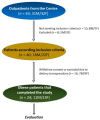The Effects of a Very-Low-Calorie Ketogenic Diet on the Intestinal Barrier Integrity and Function in Patients with Obesity: A Pilot Study
- PMID: 37299524
- PMCID: PMC10255565
- DOI: 10.3390/nu15112561
The Effects of a Very-Low-Calorie Ketogenic Diet on the Intestinal Barrier Integrity and Function in Patients with Obesity: A Pilot Study
Abstract
The very-low-calorie ketogenic diet (VLCKD) is effective and safe for obese individuals, but limited information exists on its impact on the intestinal barrier. This study analyzed the effects of 8 weeks of VLCKD on 24 obese patients (11M/13F). Carbohydrate intake was fixed at 20-50 g/day, while protein and lipid intake varied from 1-1.4 g/kg of ideal body weight and 15-30 g per day, respectively. Daily calorie intake was below 800 kcal. The lactulose-mannitol absorption test assessed small intestinal permeability. Multiple markers, such as serum and fecal zonulin, fatty acid-binding protein, diamine oxidase concentrations, urinary dysbiosis markers (indican and skatole), and circulating lipopolysaccharide levels, were analyzed. Inflammation markers (serum interleukin 6, 8, 10, and tumor necrosis factor-α concentrations) were also evaluated. The results showed significant reductions in weight, BMI, and waist circumference post-diet. However, the lactulose-mannitol ratio increased by 76.5%, and a significant increase in dysbiosis markers at the end of the diet occurred. This trend was particularly evident in a subgroup of patients. Despite initial benefits, the VLCKD might negatively affect the intestinal barrier function in obese patients, potentially worsening their compromised intestinal balance.
Keywords: dysbiosis; inflammation; intestinal barrier; intestinal permeability; ketogenic diet; obesity.
Conflict of interest statement
The authors declare that the research was performed without any financial relationships that could represent a possible conflict of interest. New Penta s.r.l. (Cuneo, Italy) had no role in the study’s design; the collection, analysis, or interpretation of data; the writing of the manuscript; or in the determination to publish the results.
Figures






References
-
- Rajoka M.S.R., Shi J., Mehwish H.M., Zhu J., Li Q., Shao D., Huang Q., Yang H. Interaction between diet composition and gut microbiota and its impact on gastrointestinal tract health. Food Sci. Hum. Wellness. 2017;6:121–130. doi: 10.1016/j.fshw.2017.07.003. - DOI
MeSH terms
Substances
Grants and funding
LinkOut - more resources
Full Text Sources

